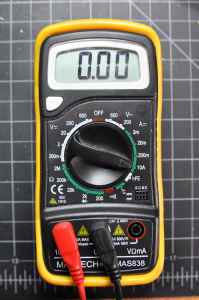

MedFriendly®


Amperage
Amperage refers to the strength of electrical current. In other
words, it is the amount of electrical energy measured that is in use
at a particular time point. Amperage is measured in units called
amperes, commonly referred to as amps. Amperage is different
from voltage because voltage mostly measures the amount of
potential energy but not necessarily the amount being used at a
particular time. Wattage (a basic unit of electrical power) is
amperage multiplied by voltage and is how electricity costs are
calculated.
Medical devices (and other devices) that use electricity require a
certain amperage to operate. In general, larger and more complex
medical devices need more amperage to run than smaller devices
and are thus more expensive.
A device used to
measure amperage
FEATURED BOOK: Delmar's Standard Textbook of Electricity
While lower amperage devices cost less, they will also have less speed and power.
Conversely, while devices using higher amperage costs more, they provide more speed
and power.
Electrical application to the human body plays a role in many medical interventions,
which requires using a safe amount of amperage. Examples are electroconvulsvive
therapy (ECT) and cortical elctrostimulation.
"Where Medical Information is Easy to Understand"™
ECT (also known as shock therapy or elctroshock) is the process of
treating mental health disorders by causing convulsions (abnormal,
severe, involuntary muscle movements) by passing controlled levels
of electricity through the brain. Electrocortical stimulation is
electrical stimulation of the brain to map which areas of brain tissue
cause certain bodily functions prior to performing brain surgery. For
example, before removing brain tissue in a particular area while
removing a brain tumor, electrocortical stimulation before surgery
helps determine what part of the brain causes certain motor
responses. The surgeon can then plan which areas of tissue to
remove to maximize outcome after surgery. A certain degree of
amperage is needed to cause each type of bodily response.















